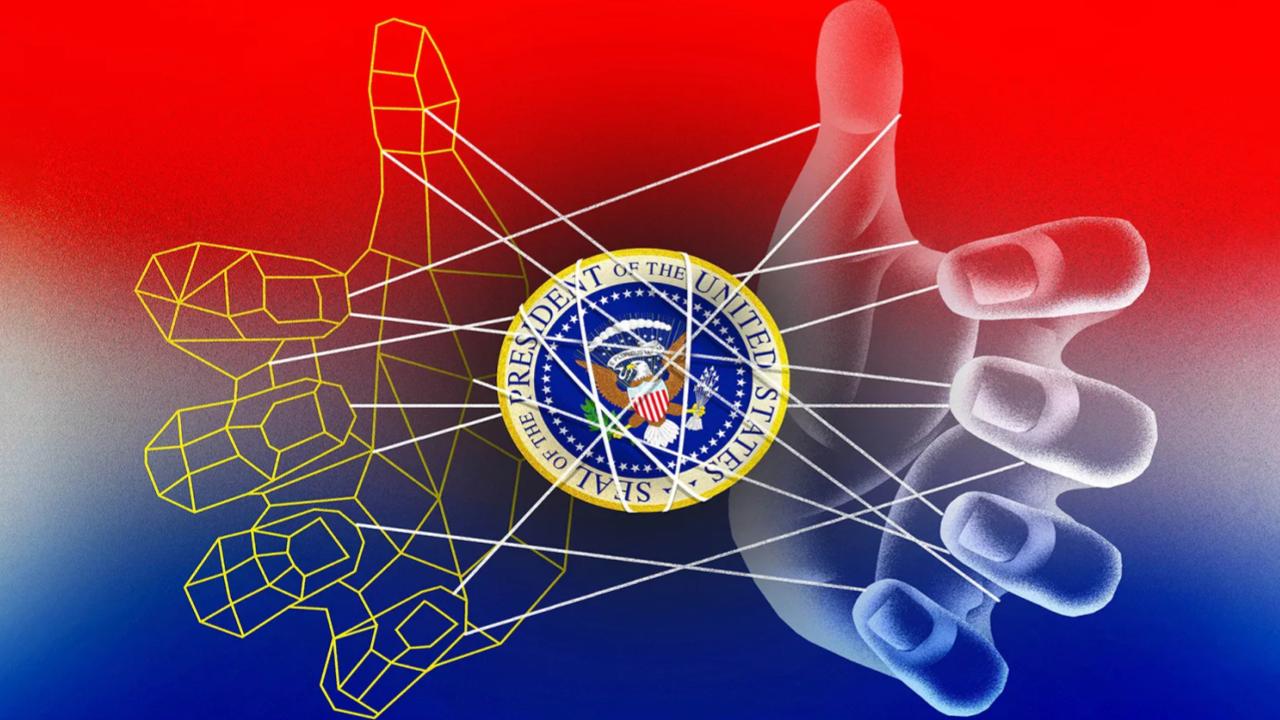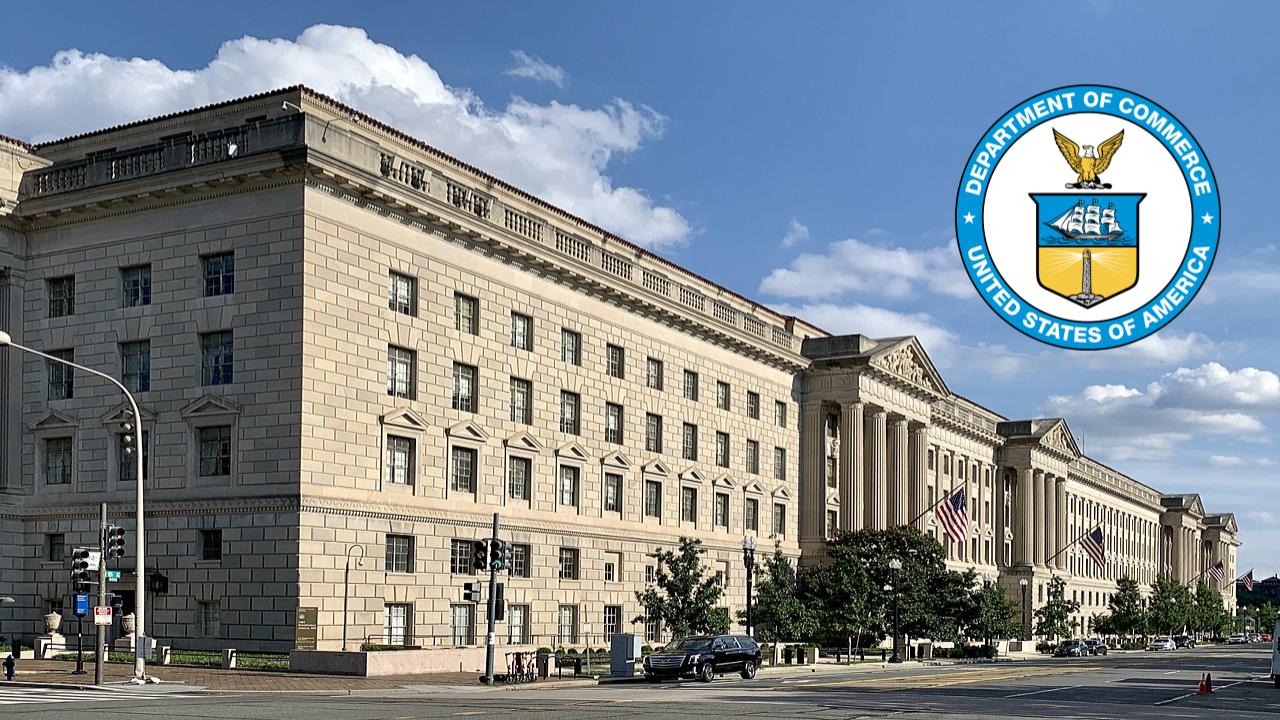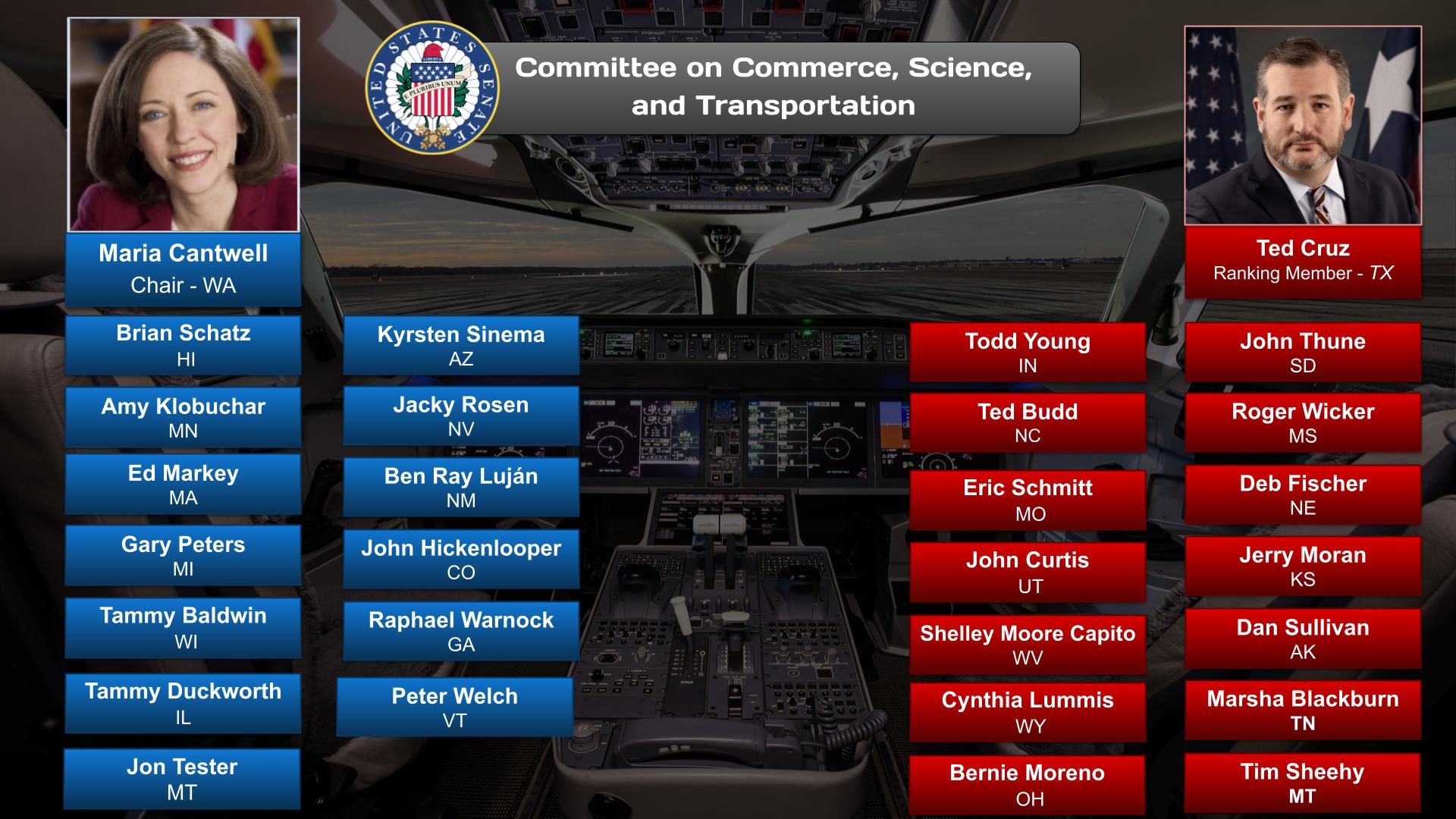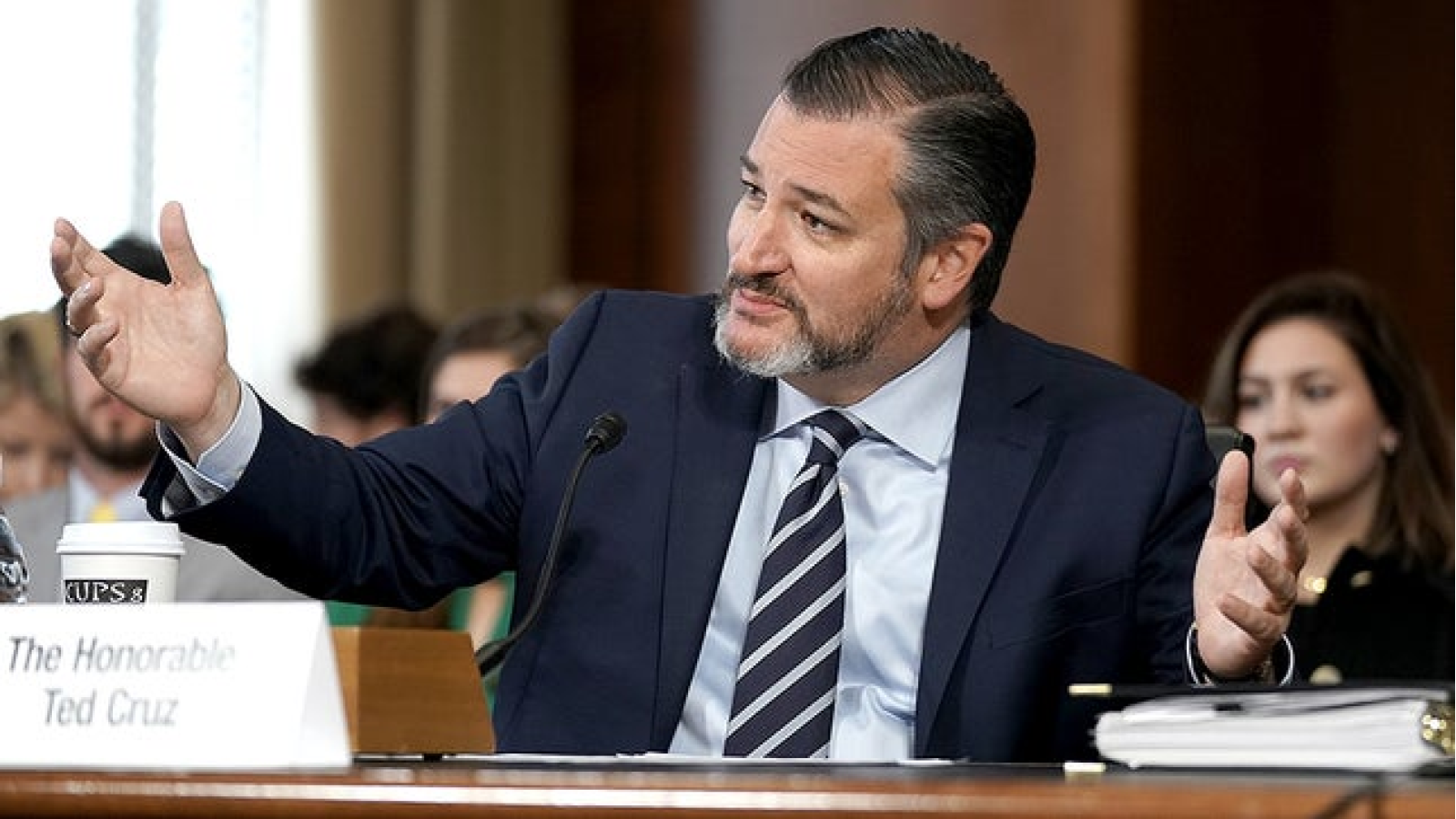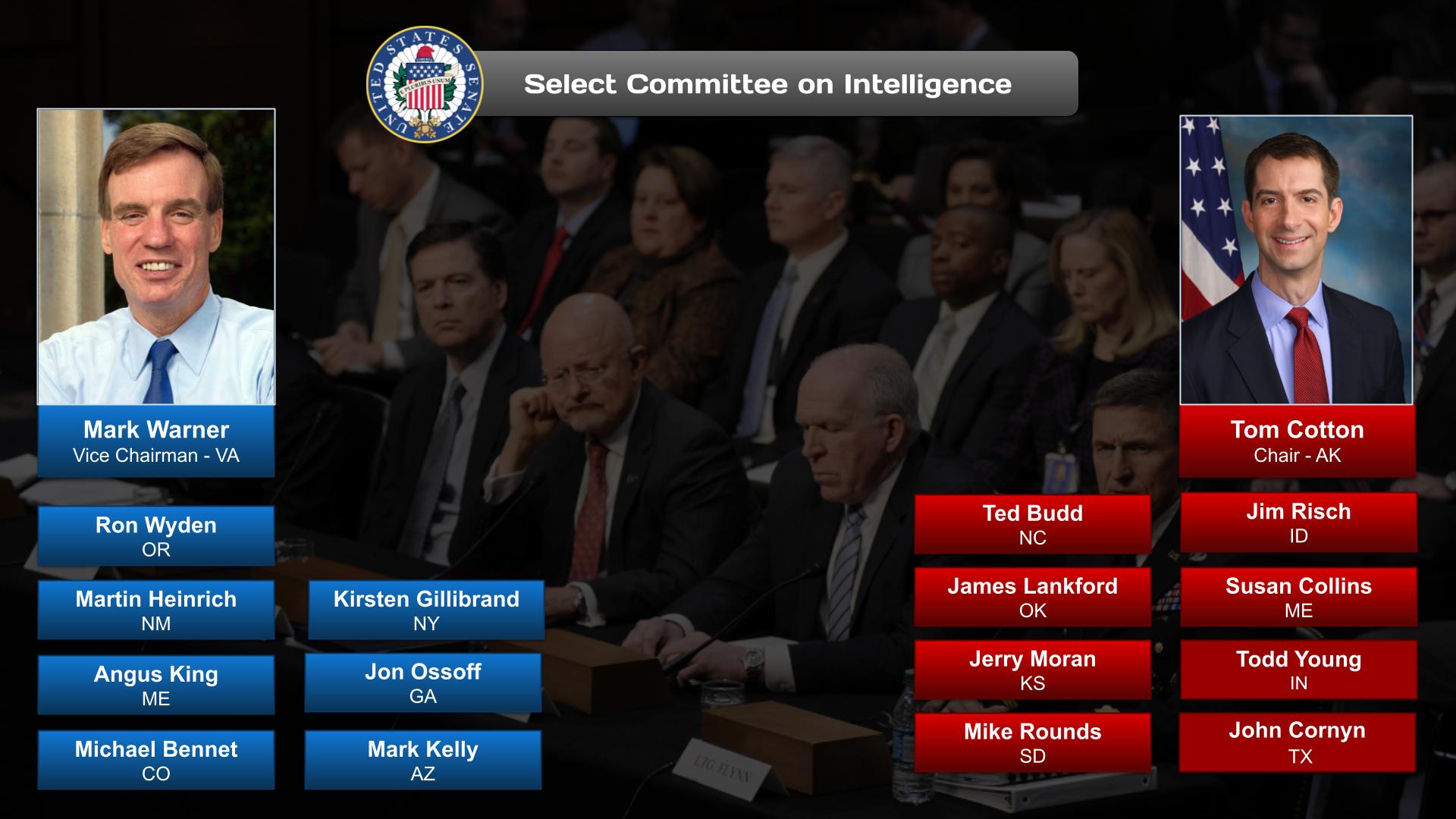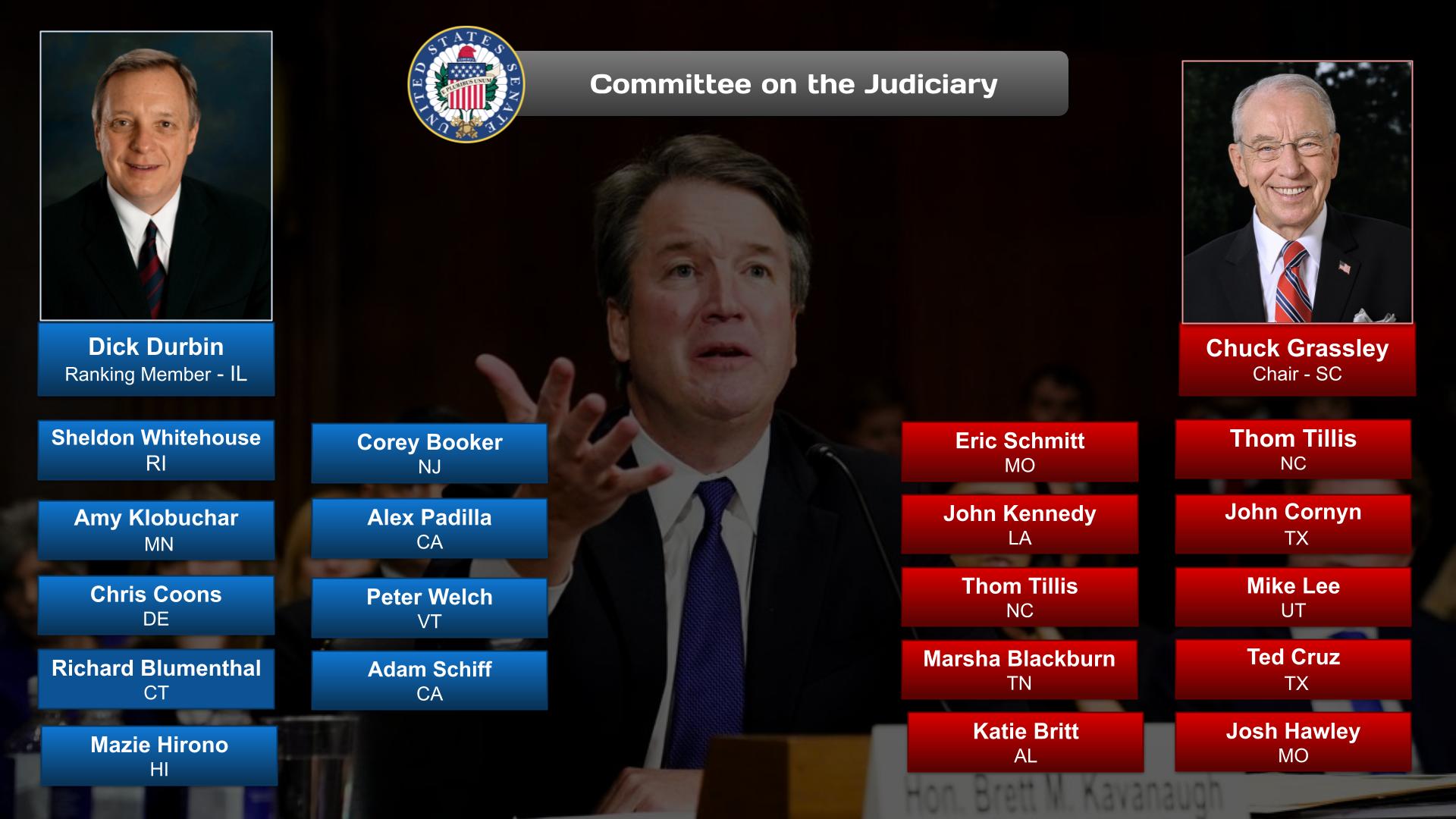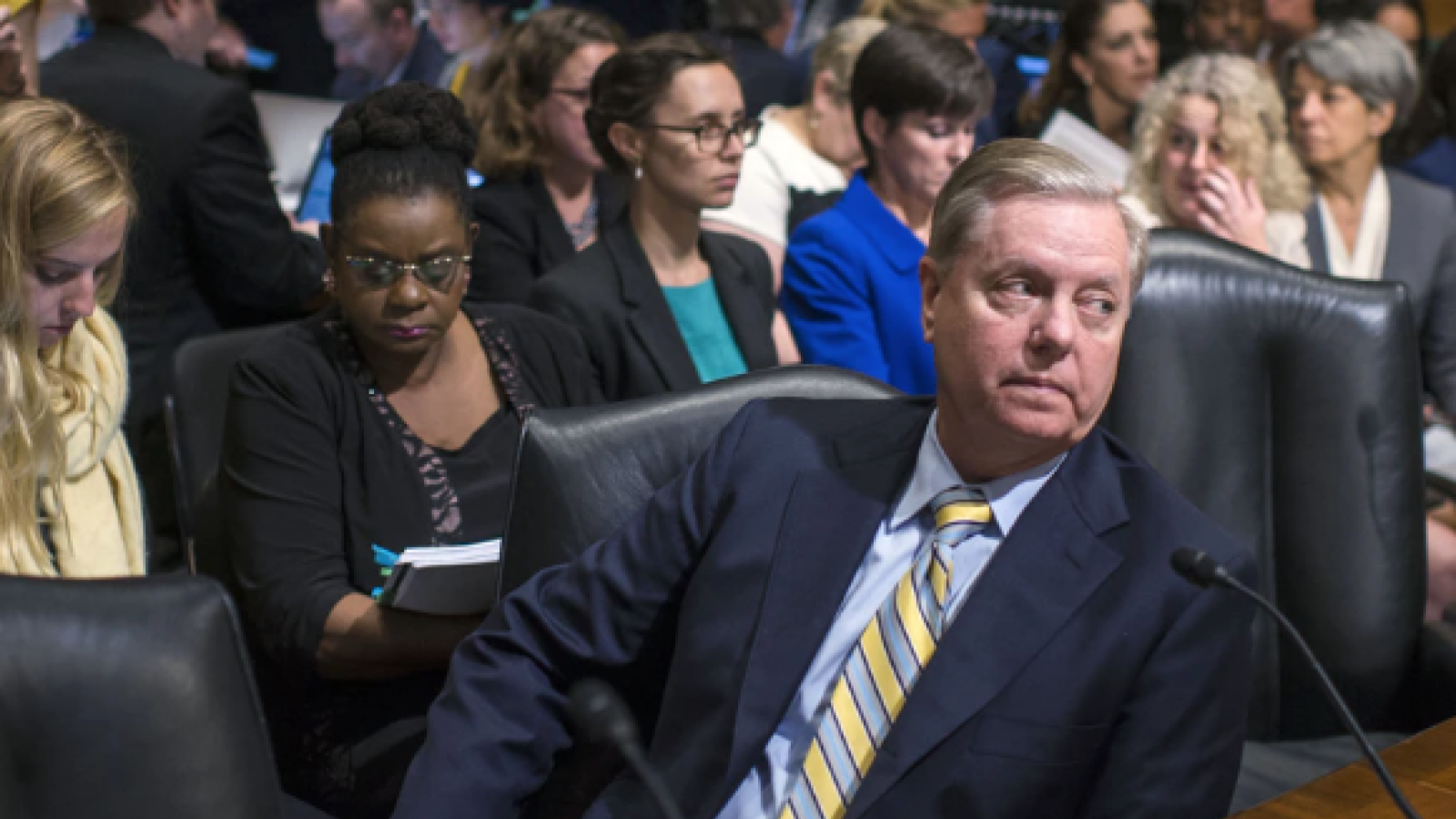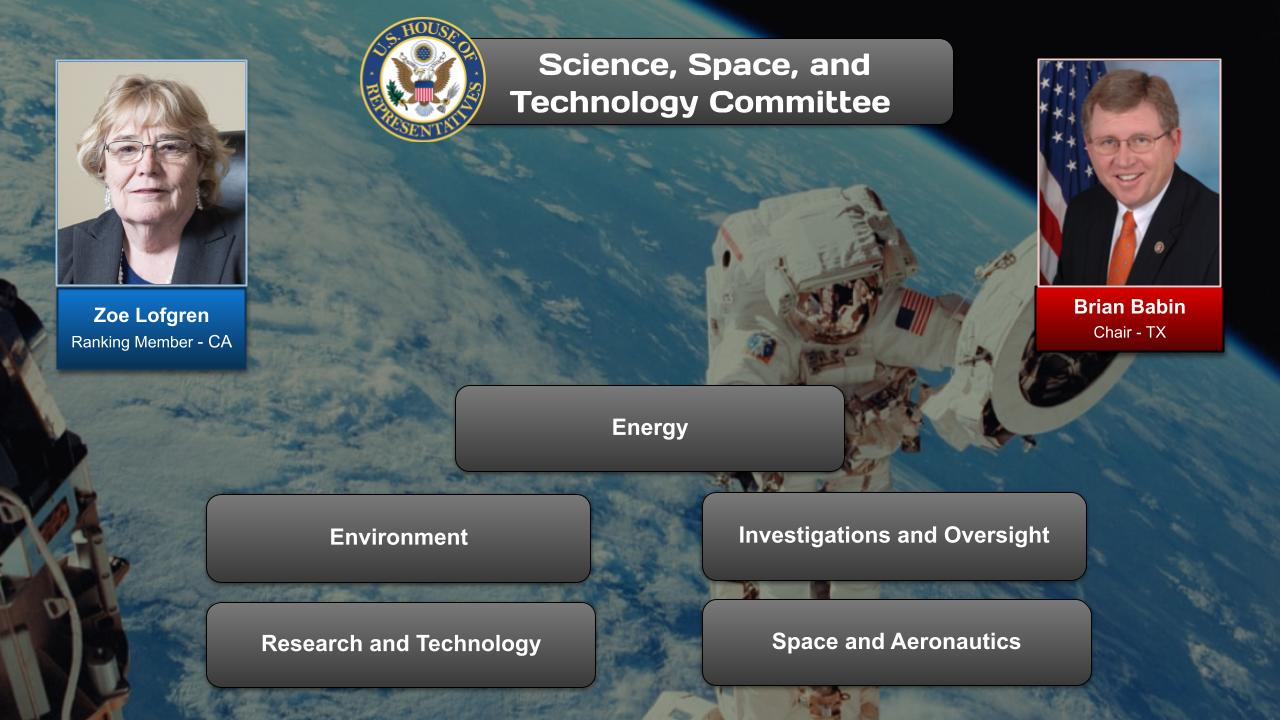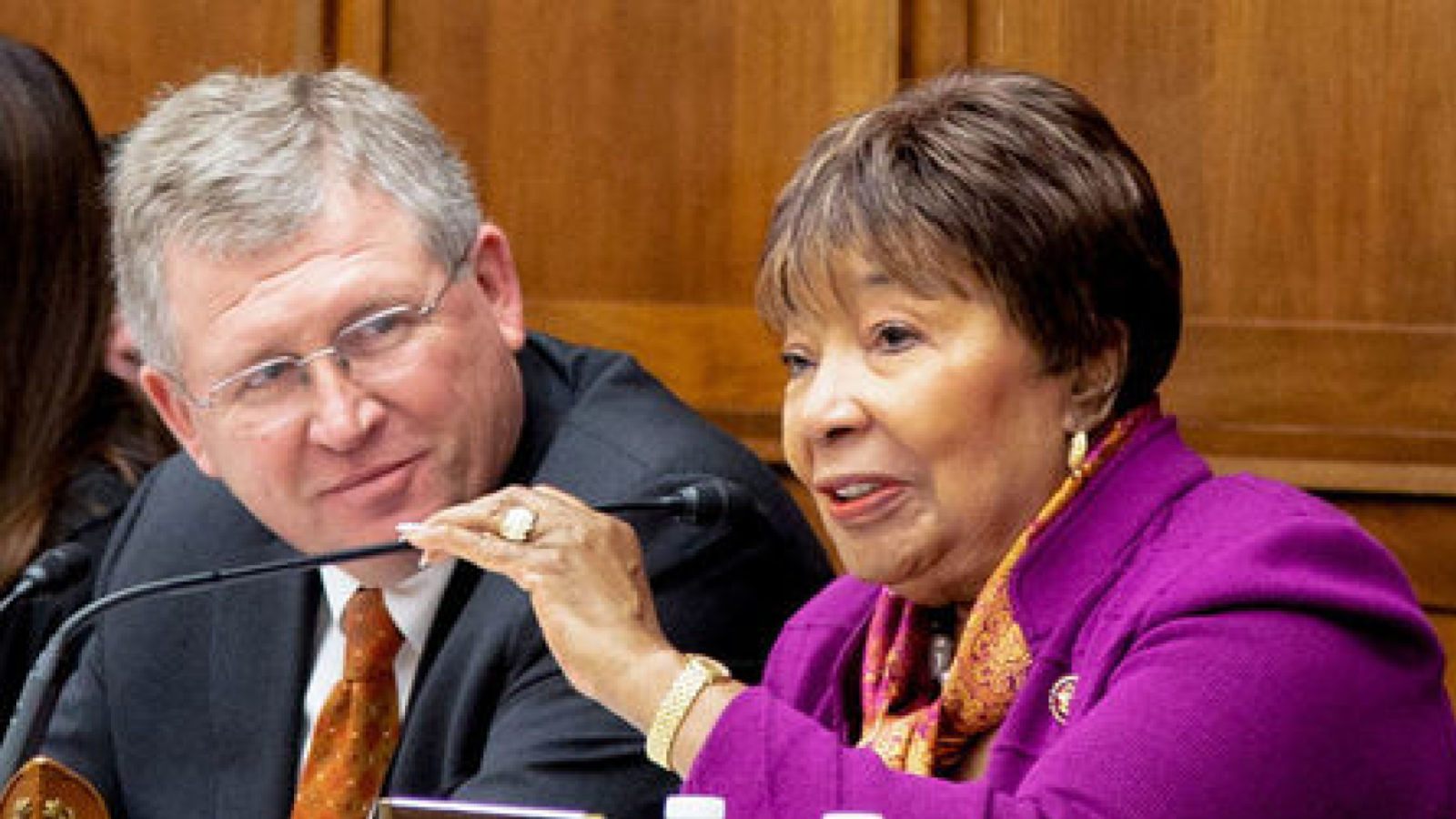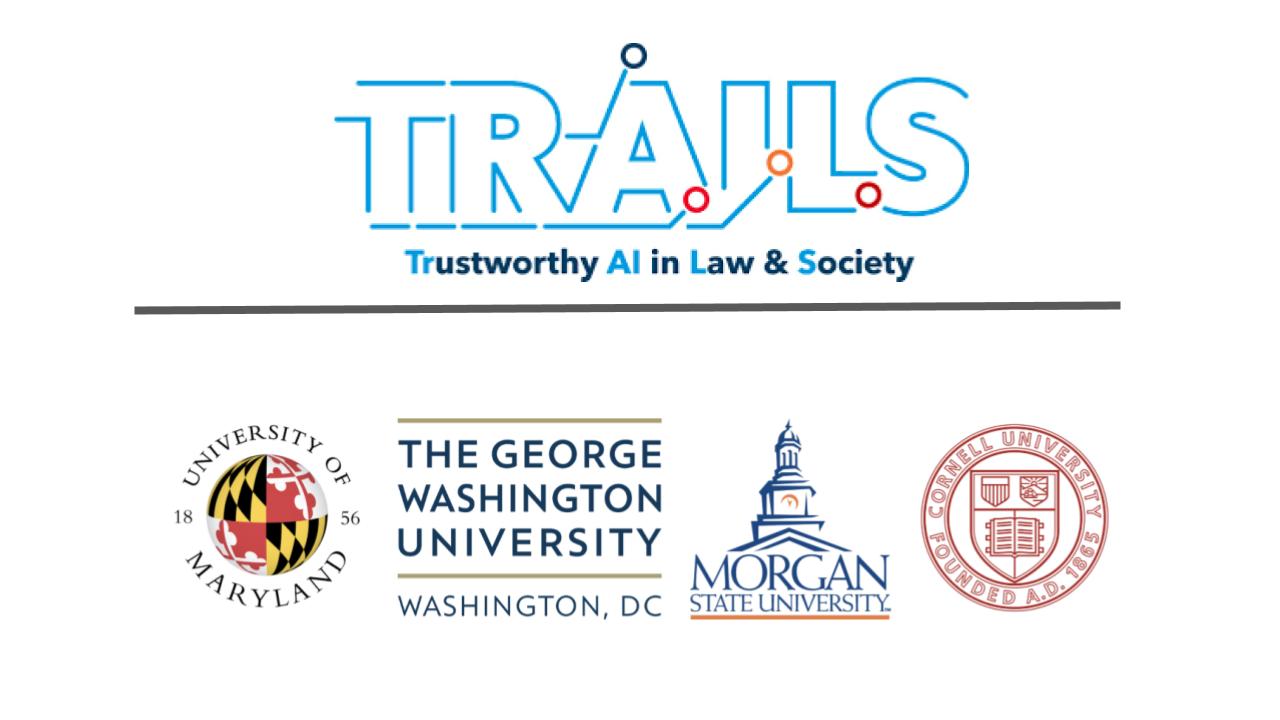Mission:
Has broad jurisdiction over all matters concerning interstate commerce, science and technology policy, and transportation, the Senate Commerce Committee is one of the largest of the Senate’s standing committees, with 26 members in the 117th Congress.
House counterparts: Energy and Commerce Committee; Science, Space, and Technology Committee; and Transportation and Infrastructure Committee
Democratic Members (Minority):
Maria Cantwell, Washington, Ranking Member
Amy Klobuchar, Minnesota
Brian Schatz, Hawaii
Ed Markey, Massachusetts
Gary Peters, Michigan
Tammy Baldwin, Wisconsin
Tammy Duckworth, Illinois
Jacky Rosen, Nevada
Ben Ray Luján, New Mexico
John Hickenlooper, Colorado
John Fetterman, Pennsylvania
Andy Kim, New Jersey
Lisa Blunt Rochester, Delaware
Republican Members (Majority):
Ted Cruz, Texas, Chair
John Thune, South Dakota
Roger Wicker, Mississippi
Deb Fischer, Nebraska
Jerry Moran, Kansas
Dan Sullivan, Alaska
Marsha Blackburn, Tennessee
Todd Young, Indiana
Ted Budd, North Carolina
Eric Schmitt, Missouri
Shelley Moore Capito, West Virginia
Cynthia Lummis, Wyoming
John Curtis, Utah
Bernie Moreno, Ohio
Tim Sheehy, Montana
Featured Video:
U.S. Senate Committee on Commerce, Science, and Transportation Hearing Q&A 06/24/2021
